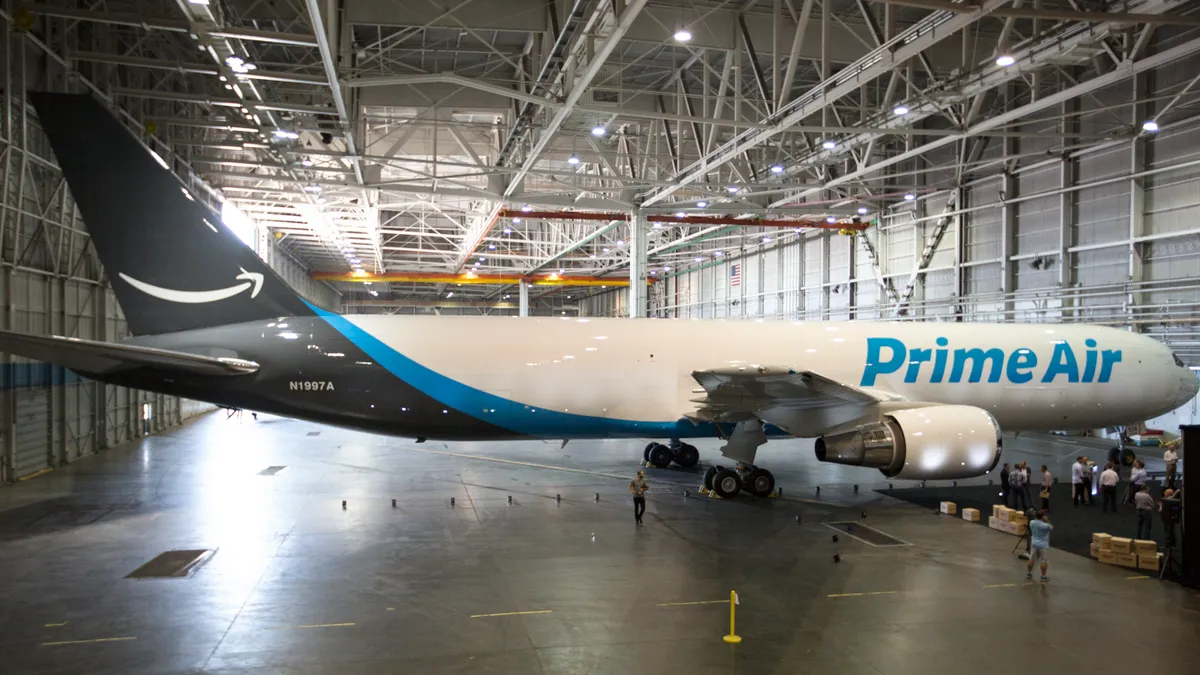Dive Brief:
- Amazon, according to unnamed sources, has selected the joint venture of Whiting-Turner and Kokosing Construction Co. to build its new $1.5 billion CVG Amazon Air cargo hub at the Cincinnati/Northern Kentucky International Airport in Hebron, Kentucky, The Cincinnati Business Courier reported.
- Already working on the project are AECOM, which is providing design services, and Woolpert, which is providing planning, civil engineering and surveying for the project.
- Amazon will first develop the southern portion of its 500 acres at CVG, then the northern portion at some point in the future. The first phase, which will include an aircraft parking ramp and a sorting facility, along with related road improvements, is scheduled to open in late 2021.
Dive Insight:
Amazon’s total build-out at CVG is expected to be about 3 million square feet, and the company will reportedly lease space from DHL, which has an international hub there, until the work is complete. Last year, airport representatives said Amazon would operate a fleet of more than 100 Prime Air cargo planes out of the new facility.
E-commerce has resulted in more construction and expansion projects at airports like CVG as e-tailers respond to heightened demand. Amazon, for instance, is establishing a regional hub at Alliance Airport in Fort Worth, Texas. The new facilities are under construction and are expected to become operational this year.
At Tampa International Airport in Florida, shipping demand is behind the $72 million air cargo expansion underway there now. The project is part of the airport’s multibillion-dollar overhaul, and the new facilities will make more room for both Amazon and UPS.
But internet shopping is also driving the warehouse construction industry as well.
Contractors are building more distribution and fulfillment centers, which are all more technologically advanced than their predecessors and growing in size. Warehouse construction starts totaled 283 million square feet in 2018, up from 49 million square feet in 2010. The number of these projects registering 1 million square feet or more also has increased, growing from 23 in 2007 to 48 in 2018.
Construction companies that build these structures must keep up with the technology that has become standard inside them, like robotics-driven automated storage and retrieval systems. This has created an industry niche, Jeff Bischoff, executive vice president of business development at Gray Construction in Lexington, Kentucky, told Construction Dive in March. The pool of contractors able to perform this work has become smaller, however, as the projects become more specialized.











